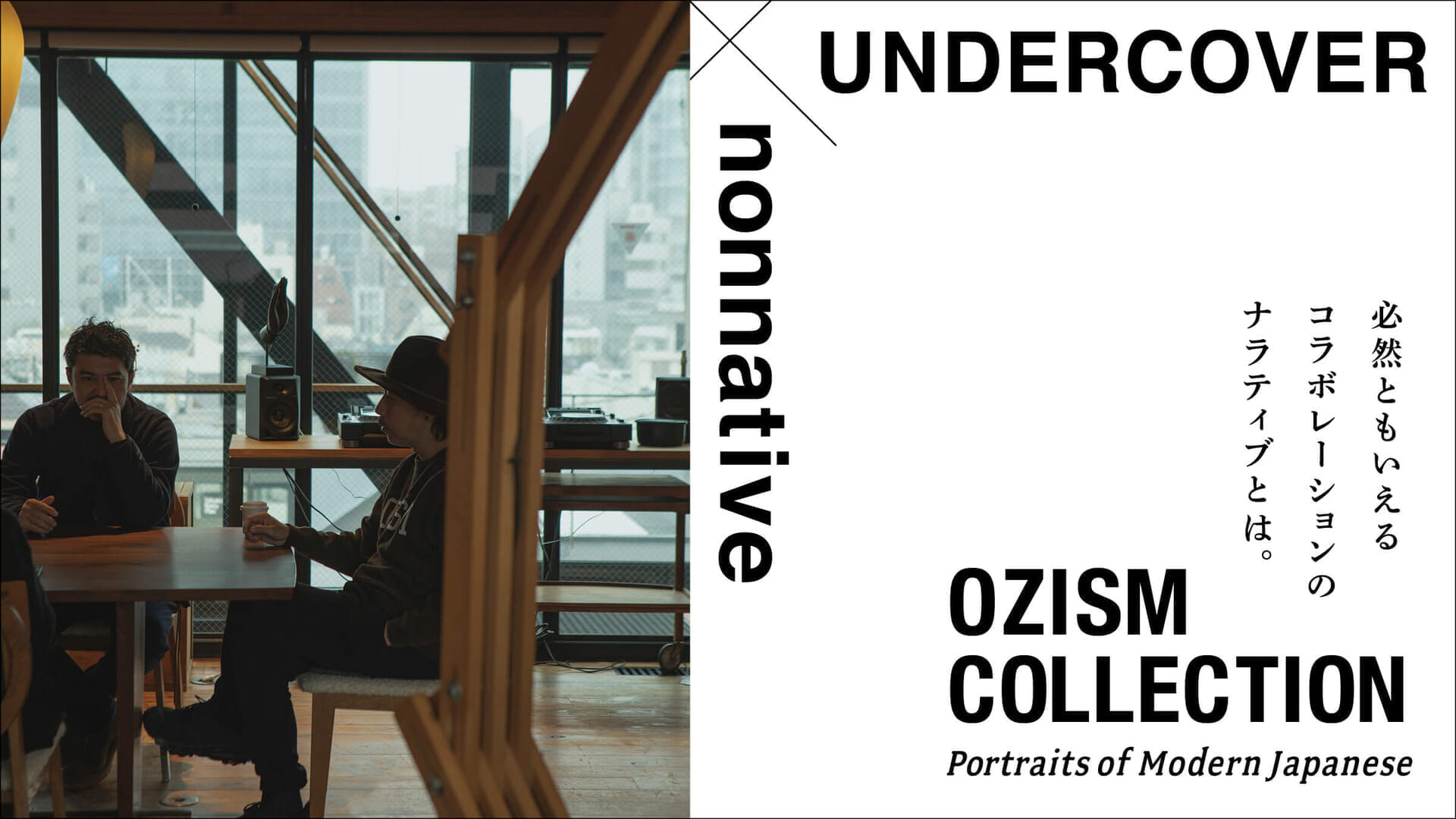It is true that what people identify with is different for each person. Some people like the materials, others are attracted to the cultural aspects.
Fujii:As a side note, there are some designers of brands that are very active today who also love "Undercover.
Takahashi:I am very happy to hear that, but from my point of view, I have always had mixed feelings about such people. It may sound strange to say, but I felt like they were making fun of me.
Fujii:No, no, no.
Takahashi:The way of making things is totally different. In particular, what I and NIGO® had been doing was very pop-like from the viewpoint of the field at that time. So when I hear something like that, I am a little skeptical. Of course I am very happy to hear that.
Fujii:On the contrary, in the scene I was in, there are people who like clothes but not culture.

I think it is very moving to see two people with completely different backgrounds and origins collaborating in this way. I feel that it was only possible because of the timing of the collaboration, or perhaps it is inevitable because of the timing of the collaboration.
Fujii:Those were the days when you couldn't find a point of contact.
Takahashi:Maybe so. I mentioned earlier about making sweatshirts from yarn, and it would be interesting to try something like that.
Fujii:Yes, there is. Like, I would have to go to New Zealand and find wool.
Takahashi:There is a cardigan made of washi paper yarn that I often wear in the summer, and it's really good. It's not sticky at all, even when I wear it in the middle of summer.
Fujii:I wonder where those threads are made. Wouldn't it be interesting to find out?
Takahashi:Yes, that's right. It would be nice if we delve into something like Japanese paper, which is linked to the ancient Japanese tradition. It's a really amazing thing, functionally speaking.
It is typical of "OZISM" that the starting point is not a place that tries to create something functional.
Fujii:I would like to focus on the true function of the material.
Takahashi:The fusion of such things with modern Japanese culture is a good thing, even for those who like context.
Fujii:By the way, Ozu wears a lot of suits.
Takahashi:There are a lot of them. They wear hats and other formal attire. That's why you don't see many kimonos. But there are a lot of women in kimonos.
Fujii:Like "Floating Weeds"?
Takahashi:Oh, I wonder if that is a kimono or a yukata. Those elements are cool too. It's hard to incorporate them into modern clothing, but you could try. I think I want to wear a yukata in the summer. Wouldn't that be cool? Like taking a fan to a beach house. But if it's a little too "the" type, it's a little scary. So I want to wear a Japanese style that I can easily wear in the city.
Fujii:I think it would be great if it could become a regular part of our daily lives. It would be great if it could become a regular feature in our daily lives. When I watch Ozu's films, I feel like I can "get back to it," mentally. That sense of tension is also good.
I think it's a bit crazy, the extreme attention to detail in the artwork.

Takahashi:I really like that. The stories are similar to what we have experienced in our own lives. The story is about parenting and how we feel about our own parents. It's amazing that you were able to create such a tight story. Normally, I think people would want to make the story a little more dramatic. You have to cut it down, cut it down, cut it down. I guess it's impossible for people who can't get into that worldview to get out of it, but once you get into it, you can't get out of it.
I think that's right. There are those who say, in the extreme, that Ozu is all we need.
Takahashi:But as for myself, I intend to include Akira Kurosawa's entertainment value in my spirit. So I may change the name of this project.
That's interesting.
Fujii:For me, Akira Kurosawa is just the beginning.
Takahashi:It's great fun. The story is well written, and the sets and clothes are cool. And "Red Beard" has a man wearing a samue (a Japanese traditional Japanese work of art). Let's watch "Red Beard" at Fujii's house first.
I'm going to focus on the theme of the two great masters.
Takahashi:I guess I can't leave those two out, can I? And then, we might end up with Tora-san.
Fujii:Tora-san might be the ultimate. I can't get enough of the light blue and beige color scheme.
It's a little bit French.
Takahashi:That's already a nice collar. Come to think of it, Tora-san is also a collarless shirt.









